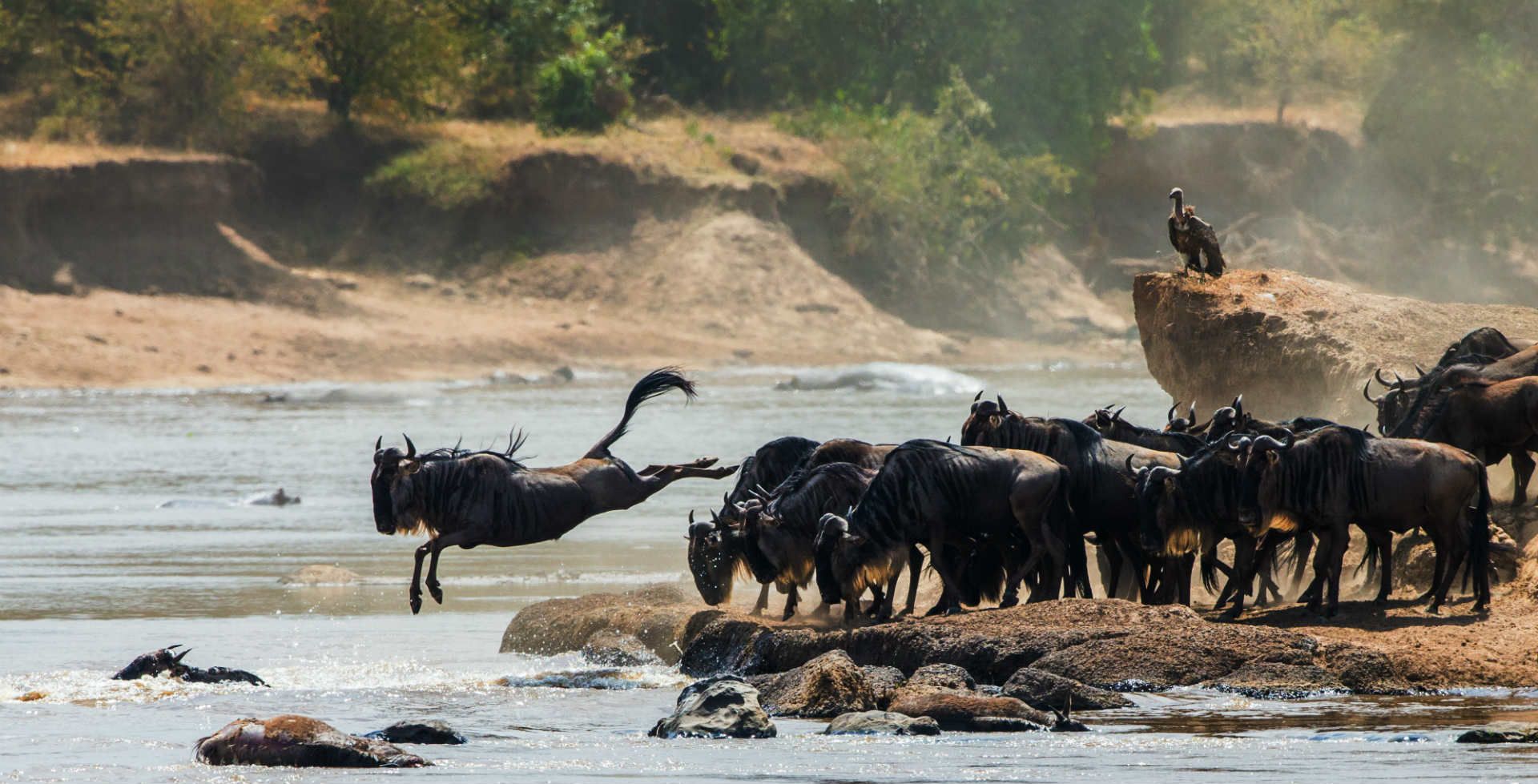Weather considerations
Broadly speaking, Kenya experiences hot, dry weather from January through to early March, and hot, wet “long rain” conditions from mid-March until early June.
Meanwhile, June/July through to October is warm and dry, with November and early December experiencing warm temperatures and brief periods of heavy rainfall known as the “short rains.”
To help you decide when to vist, read on for a rundown of the weather in Kenya around the year.
July-October dry season
The July-October dry season is generally considered the best time to visit Kenya for a safari. First up, the cooler, drier conditions make game drives all the more comfortable.
Secondly, wildlife is easier to spot as a result of animals congregating around diminished water sources, and thinner vegetation. As a bonus, the dry season sees fewer mosquitoes.
At the same time, it’s worth knowing that this is peak tourist season, so parks can be crowded, and prices for lodges and camps tend to be higher.
November-December short rain season
Rains are usually light and far less disruptive between November and December than they are during the April-June “long rain” season.
At the same time, these months draw fewer visitors than the preceding dry season, which means less crowded national parks, and better availability at lodges.
Just be aware that while the season’s short rains don’t usually last all day (the clue’s in the name!) and safari activities can still be enjoyed, the weather can be a little unpredictable, with some occasional heavy showers.
March-May long rain season
Due to heavy rains, this is the least popular time for safaris in Kenya. Expect frequent downpours, higher humidity and more mosquitoes.
In addition, heavy rains can render some roads and areas inaccessible.
On the plus side, the long rain season means significantly lower prices, fewer tourists, and incredibly lush landscapes. March-May also heralds some special wildlife experiences — more on those below.
Editor’s tip: for more detail on the weather, read up on when to go to Kenya.









